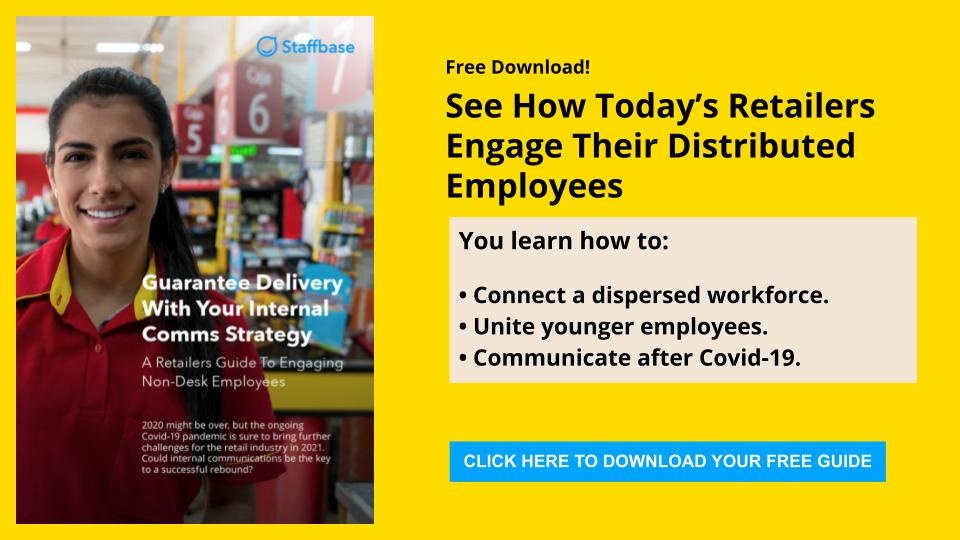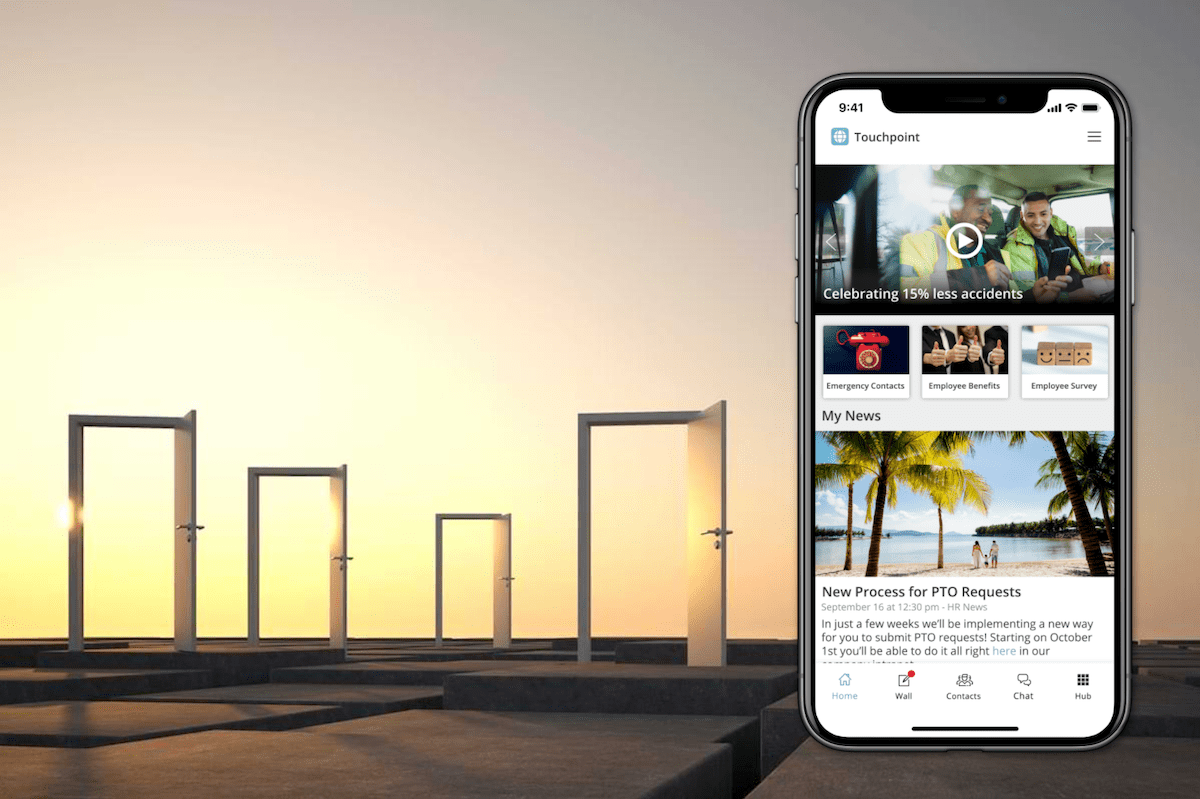Before you start reading, I want you to Google “retail challenges after Covid-19.” Go ahead, I’ll wait — but leave this tab open! 😀 Finished? What results did you find? I’m willing to bet that most of them had to do with making sure that the in-store customer experience, so changed since early 2020, remains a safe and welcoming one. As well it should! But what about your employees? What’s your responsibility to them?
According to Forbes magazine, 60% of businesses have had to hire new employees since the start of the pandemic. These new workers have faced unprecedented challenges when it comes to on-the-job training and the learning of vital new safety protocols. Such matters, if not addressed, are almost sure to derail customer satisfaction and loyalty. Why? Because now more than ever, customers are seeking inspiration from retailers that convey trust, authenticity, and transparency.
And that all starts with your employees.
This article will discuss the challenges faced by retailers now that they’ve reopened their brick-and-mortar stores. But it will do so from a communication-driven, employee-first perspective. The employee experience has evolved from the principles established by the customer experience. So too should those lessons apply to a post-Covid retail strategy that puts your entire workforce front and center.
Challenge #1: How should the in-store experience look for global retailers?
If you own a single independent store then your job is fairly cut and dry. But for global chains with multiple stores spread across several regions or countries, in different time zones and languages, your plans won’t be one-size-fits-all.
Local or regional government offices will be able to provide you with specific health and safety guidelines. But getting that information to all of your people could prove to be a complicated affair. Furthermore, retail workers will require new levels of training before they can safely return to a workplace environment drastically changed by the pandemic.
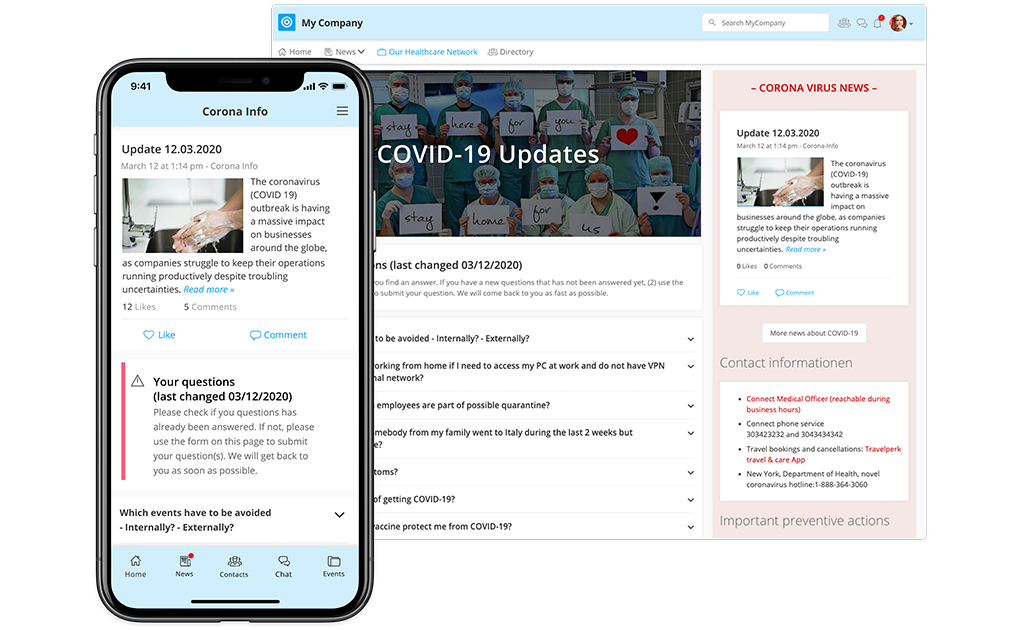
Internal communicators will need to pair with HR leaders to establish the most effective ways to share an array of new, constantly changing guidelines and mandates. And they’ll need to do so in a way that’s tailored to individual locations and employee personas.
Solution: Tailored, targeted, and timely communication that reaches employees in multiple channels.
Push notifications and the ability to communicate directly with every employee wherever and whenever necessary was a game changer even before Covid-19 reared its ugly head. Now, they’re an essential component of effective internal communication.
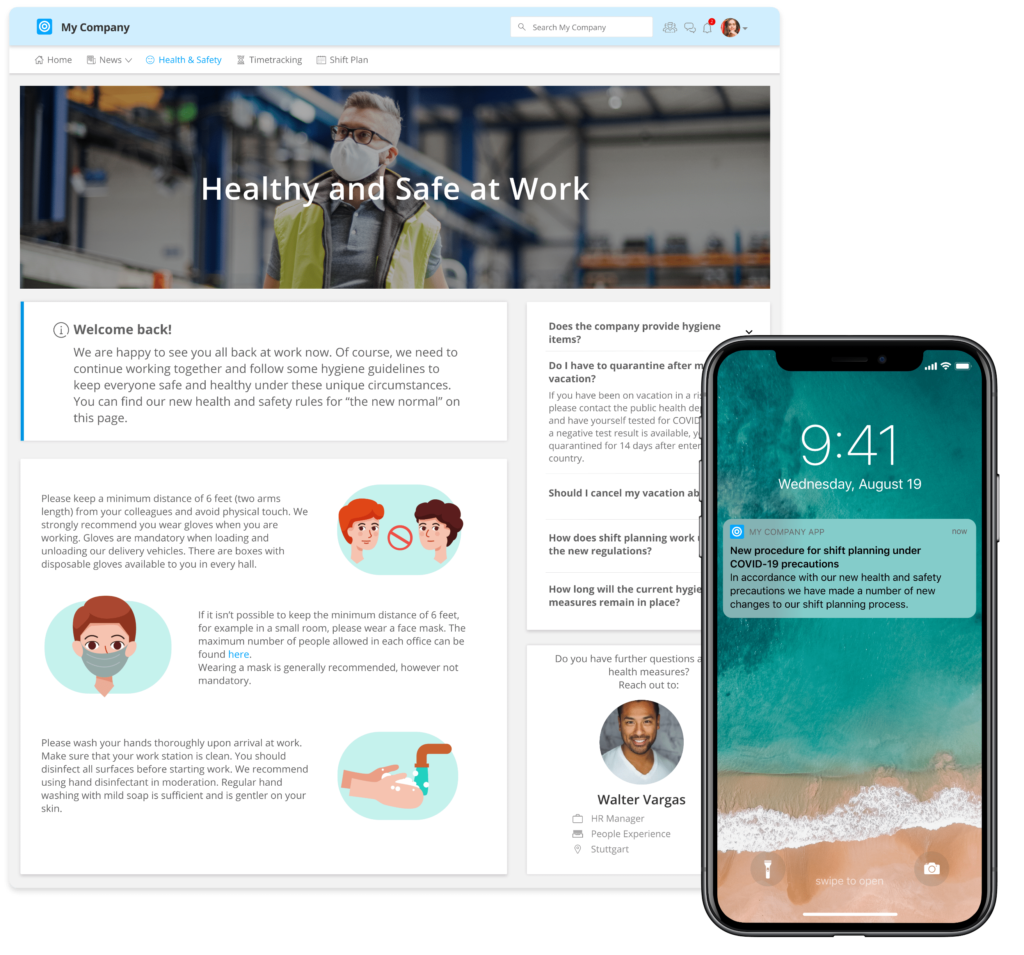
As retailers worldwide slowly emerge from the pandemic, Covid-related news and information is changing on an almost daily basis. Retail organizations need to keep up for the safety and well-being of their on-site customers and employees alike.
Meet Your Retail Challenges with the 3 T’s of Modern Comms:
Tailored
Targeted
Timely
An employee app that broadcasts information in real-time directly to employee smartphones can be an essential tool for helping stores to reopen safely and for staff to feel confident and secure as they return to work. You can target such updates by role and/or location or push them to the entire company.
Challenge #2: Rehiring/hiring of seasonal workers and those affected by Covid layoffs.
Retailers have traditionally depended on seasonal and part-time workers to fill the personnel gaps that open during busier seasons. Often, these workers have been younger people who balance their studies with part-time work. Lately, that group has expanded to include employees who have been temporarily furloughed during the ongoing pandemic response.
Solution: General communication with current and temporary workers keeps everyone in the loop.
Retailers generally struggle to maintain a connection to temporary workers when their employment periods have been paused. Providing a direct line of communication with these employees and offering, for example, outreach programs aimed at high performers who employers want to eventually rehire, companies can maintain a valuable talent pool.
Such efforts can give retailers a head start in their search for seasonal workers, experienced part-time employees, or already-trained former staff.
Additionally, retailers can create and expand employee loyalty and engagement in times of crisis and normalcy alike by promoting open and interactive channels for communication and engagement.
For example, one international brewery has created “BrewDog’s Got Talent,” a channel in their employee app that showcases employees on a fun, personal level. Sharing that kind of content with seasonal workers is a great way to keep them engaged and ready to re-board.
As seasonal employees come and go, an app can help to unlock efficiencies when it comes to remote onboarding, shift planning, vacation requests, time tracking, a shift exchange platform, alumni information. The possibilities really are endless.
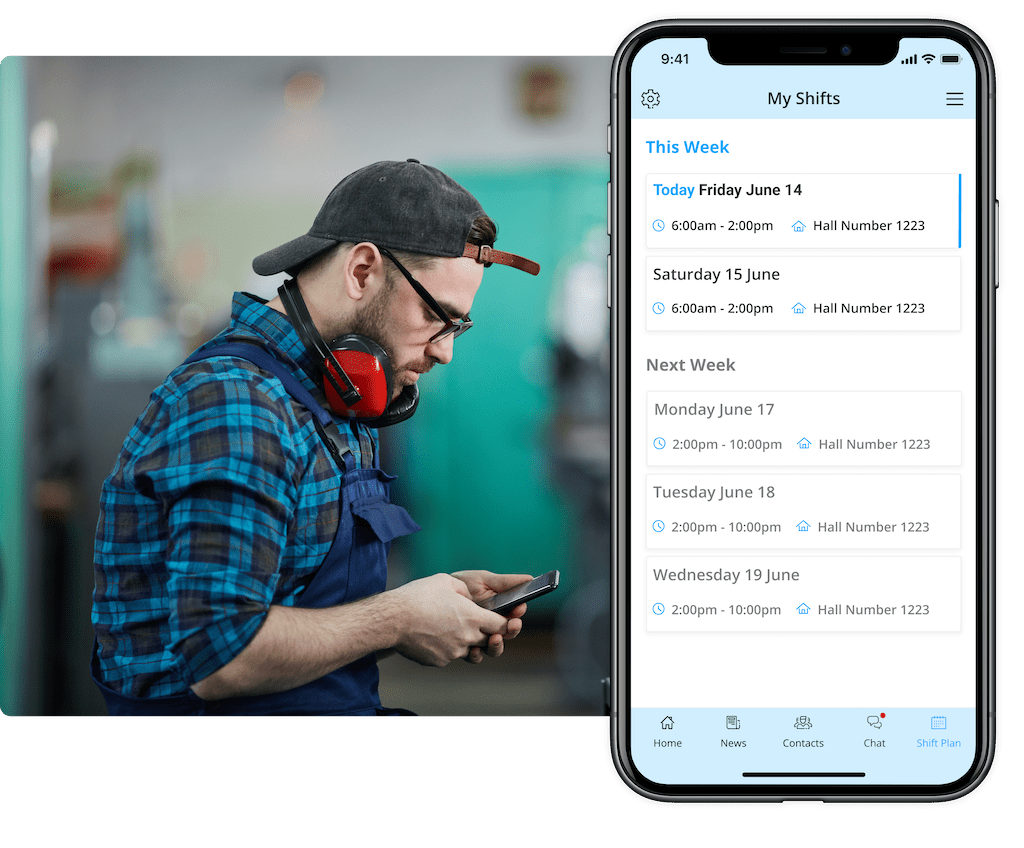
General information can be made available that keeps everyone in the loop — including gig or seasonal workers who aren’t actively employed. And all of this is possible without the need for private phone numbers or email addresses.
Challenge #3: Retail success depends on an array of workers: from the shop floor to the warehouse and every job in-between.
The clerk on the floor of your local retailer may be the customer-facing member of the business, whether it’s a department store, a supermarket, or an online bike shop. But don’t forget: these people represent only one link in a chain that stretches all the way back to a company’s production facilities and warehouses.
Basic retail models:
• Supermarkets:
Distribution (logistics) and stores.
• Online Retail:
Corporate HQ, no physical storefront, distribution centers, and warehouses.
• High Street Retail:
Large number of stores and retail workers; relatively small head office.
• Manufacturing/Retail:
Factories and storefronts.
Every organization consists of people with vastly different roles and responsibilities. This is no different for retail companies. These differing employee personas will all have specific requirements when it comes to the information they need to do their jobs effectively. That also applies to the way they best receive and share information.
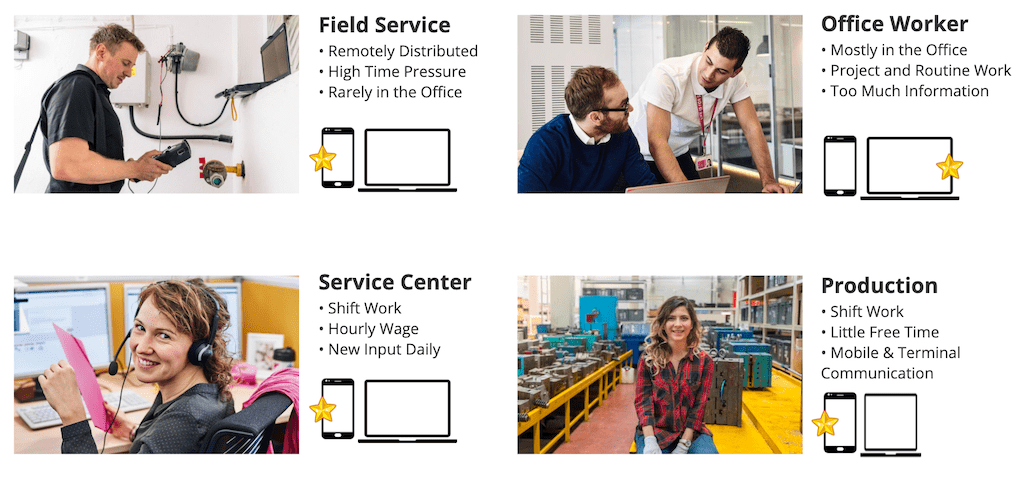
This means that communication must be tailored to your employee personas in order to provide the greatest relevance and generate engagement.
Most larger retail companies will have warehouse staff as well as logistics teams that face very different challenges than the ones affecting your in-store sales associates. The same goes for the growing number of online retailers whose behind-the-scenes workers are just in need of guidance as customer-facing counterparts.
Solution: An Employee Communications App
An employee communication app is a solution with proven value in a variety of industries. For instance, the wide distribution and mobility of their workers practically define the logistics and transportation industries. More than 80% of employees in these fields don’t sit at a desk, which makes keeping them in the loop all the more challenging — and all the more essential.
For logistics employees, an employee communications app increases efficiency in several areas — in addition to robust internal comms. These include the adherence to maintenance regulations and on-site safety inspections. And it offers this kind of support in a multitude of languages, an important requirement for companies with an international array of employees.
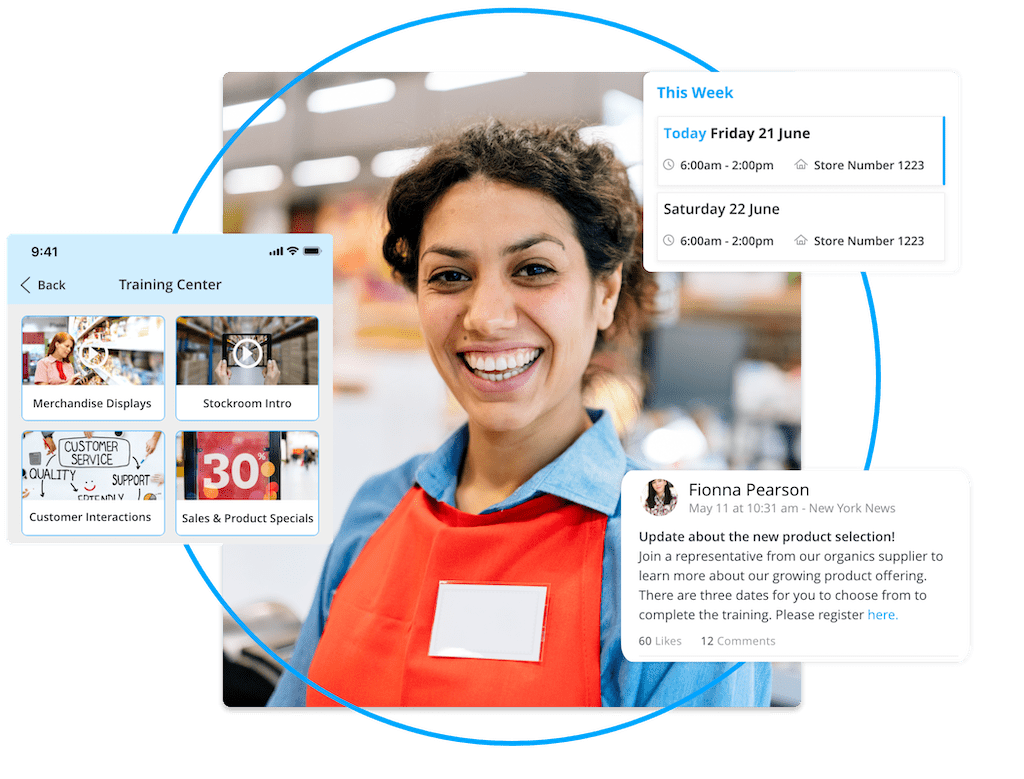
You can read here about how one logistics company has been using an employee app to keep things moving smoothly since 2017. Likewise, UK bedding giant Dreams has been using their employee app to unify communications throughout the coronavirus crisis. They switched from scattered channels to a single platform that allows them to reach the warehouse, the storefront, and HQ employees, even while 85% of the staff were furloughed. You can read their story here.
Challenge #4: Regional frontline managers are usually the ones communicating company updates, often leading to delays.
There is often a cascading, trickle-down, or “one-to-many” approach in management, with a single regional manager responsible for multiple stores. Under such conditions, it’s hard to arrange training and enablements as well as updates on important and relevant company news.
Solution: Direct support for retail employees.
When necessary, an employee app allows companies to bypass middle management in the distribution of basic information. This should be seen as good news for frontline managers, as it will allow them to focus on the more important task of implementing broader corporate objectives.

Informed employees are happy employees, and their satisfaction is reflected in their customer interactions. This is a topic we’ve written about in depth in the article, “Why Internal Communication in Retail Is Hard but Oh-So Important,” which you can read here.
With an employee app you can directly update sales associates and customer service representatives about:
New product releases.
Seasonal sales & promotions.
Updated training modules.
Challenge #5: GDPR and data-security concerns.
WhatsApp or Facebook groups are widely used within stores. These informal channels are great for sharing information and soliciting feedback, but they fail to meet data protection standards.
Solution: Connect all employees in real time, without the security risks.
An employee app with a built-in chat function brings instant messaging for business directly into your employee platform. Make it convenient and safe for teams and colleagues to connect quickly, with 1:1 and group messages for all employees. You’ll get all the advantages of instant messaging, with none of the worries about compliance.
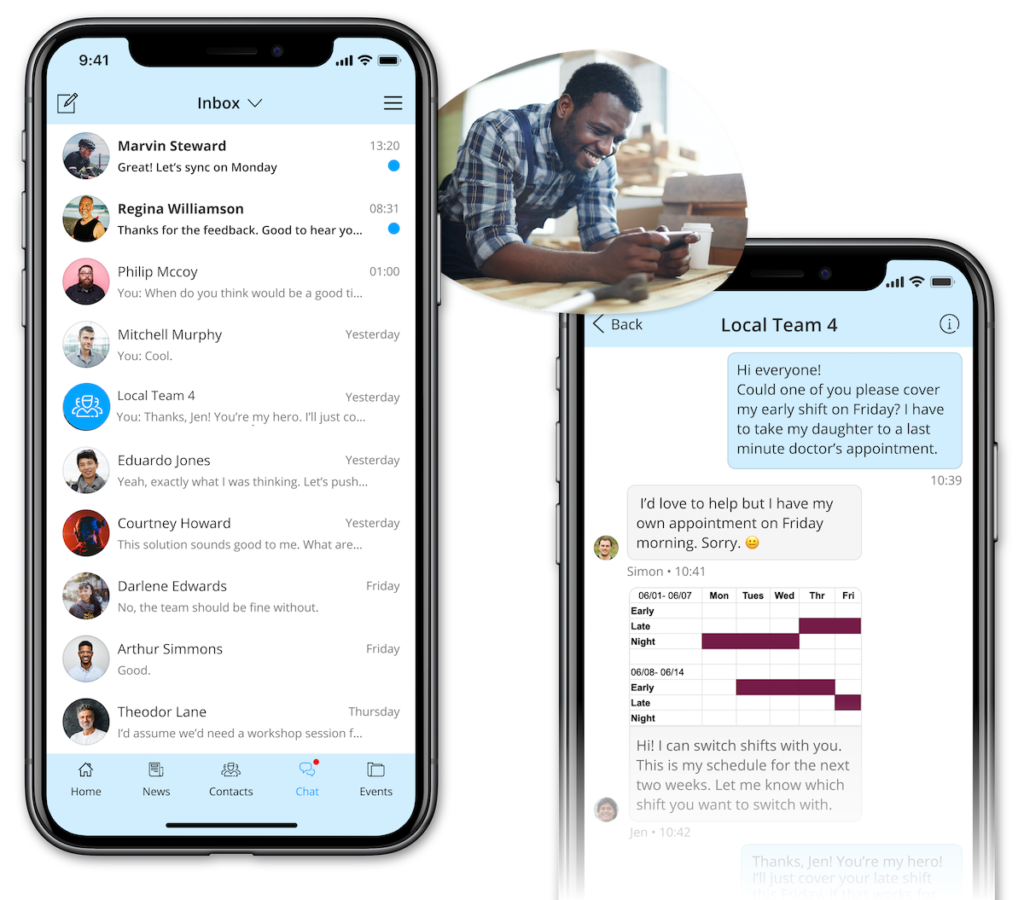
Read more about employee communication apps:
- Employee Communication Apps: 10 Benefits of a Mobile Comms Platform
- Employee Apps: 8 Steps for Finding the Best
- Internal Communications App: 8 Key Points to Get Started
- Employee Engagement Apps: 10 Decisions to Make Before You Start
- Why Companies Choose Staffbase as their Employee Communications Platform

